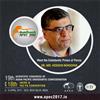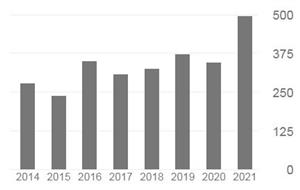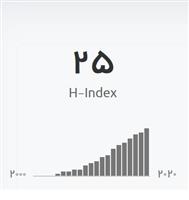Effect of Varying Water-to-Powder Ratios and Ultrasonic Placement on the Compressive Strength of Mineral Trioxide Aggregate
Abstract
Introduction: The purpose of this study was to compare the compressive strength of mineral trioxide aggregate (MTA) when mixed with 2 different waterto-powder (WP) proportions using either hand or ultrasonic placement.
Methods: Tooth-colored ProRoot MTA (Dentsply Maillefer, Ballaigues, Switzerland) and white MTA Angelus (Angelus Soluc¸oes Odontologicas, Londrina, Brazil) were investigated. One gram of each MTA powder was mixed with either 0.34 or 0.40 g distilled water. The 4 groups were further divided into 2 groups of 5 specimens for each of the following techniques: conventional (ie, hand placement) and placement using indirect ultrasonic activation for 30 seconds.
All specimens were subjected to compressive strength testing after 4 days. The results were statistically analyzed with multivariate analysis of variance and Tukey Honestly Significant Difference tests at a significance level of P < .05.
Results: The mean compressive strength values of ProRoot MTA (84.17±22.68) were significantly greater than those of MTA Angelus (47.71±14.29) (P < .01). Specimens mixed with the 0.34 WP ratio had higher compressive strength values (72.85±25.77) than those mixed with the 0.40 WP ratio (56.69±24.85) (P < .05). The highest compressive strength values were recorded for ProRoot MTA specimens that were mixed in the 0.34 WP ratio, and then the samples were placed with ultrasonic activation (mean = 91.35 MPa). The lowest values were recorded for MTA Angelus samples that were mixed in the 0.40 WP ratio, and the specimens were placed without ultrasonic activation (mean = 36.36 MPa). Ultrasonic activation had no significant difference in terms of compressive strength.
Conclusions: When using ProRoot MTA and MTA Angelus, higher WP ratios resulted in lower compressive strength values. Ultrasonication had no significant effect on the compressive strength of the material regardless of the WP ratio that was used. Therefore, adherence to the manufacturer’s recommended WP ratio when preparing MTA for use in dental applications is advised.
Keywords: Compressive Strength, Mineral Trioxide Aggregate, Ultrasonic Agitation, Water-To-Powder Ratio.














